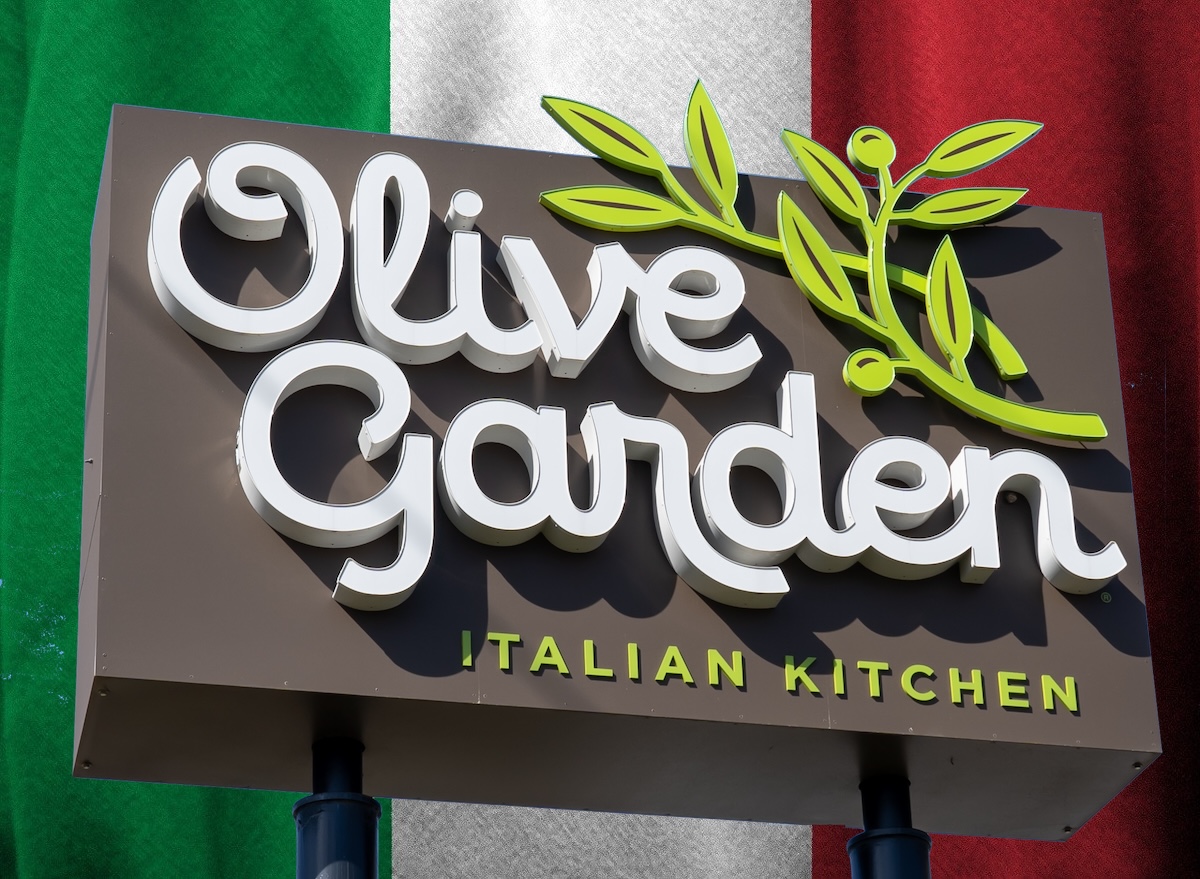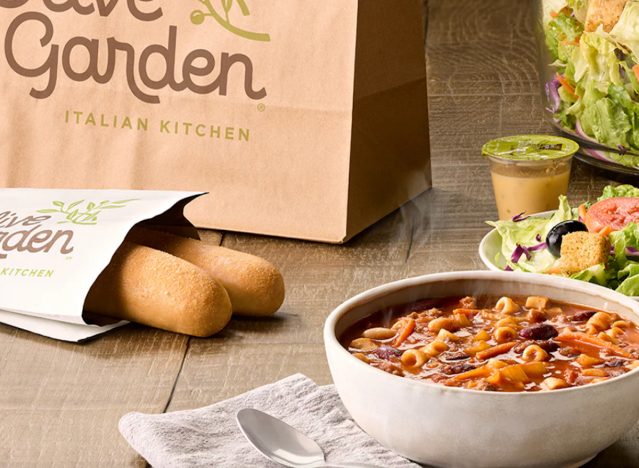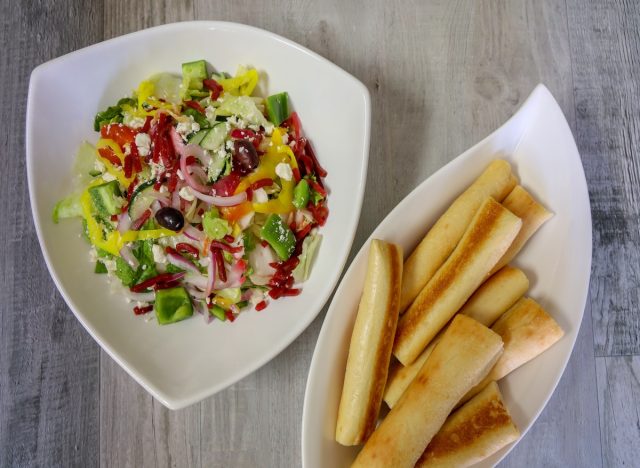The Truth About Olive Garden’s Endless Breadsticks

Nothing says “Olive Garden” better than the iconic unlimited breadsticks, a restaurant side dish everyone has heard of whether they are fans of the Italian-American chain or not. Now Olive Garden executives are shedding light on exactly how the delicious signature breadsticks came to be (certainly a case of necessity being the mother of invention). Here’s why the famous starter was created, and how it represents Olive Garden’s entire restaurant philosophy.
Hungry, Impatient Customers

According to Jaime Bunker, senior vice president of marketing for Olive Garden, breadsticks were created in 1982 when Olive Garden opened for the first time. Hungry guests were lined up outside the door, impatient for their food, and the kitchen couldn’t keep up with orders. To give the chefs some more time to cook, Blaine Sweatt, an Olive Garden cofounder and general manager, came up with the idea of breadsticks, soup, and salad. “It made guests really happy, but it also helped the kitchen catch up since servers could get them themselves,” Bunker told CNN.
Italian Hospitality

The breadsticks were free for anyone who ordered an entree at Olive Garden, and quickly became synonymous with the chain’s philosophy of Italian hospitality and warmth. “It’s a tradition for the brand that even to this day embodies that spirit that we have of Italian generosity, of family, hospitality, of being in someone’s home, where they just want nothing more than for you to have a good time and to be well fed,” Bunker told CNN.
Withstanding Pressure From Investors

The breadsticks have remained a core part of the menu despite “a lot of pressure from some of the investment groups that wanted to get rid of it because of profitability and cost,” Maeve Webster, president of consulting firm Menu Matters, told CNN. “You have to give Olive Garden and those running it credit for being true to that brand identity and sticking with it, even if it costs a little bit more,” Webster told CNN.
Value For Money

Olive Garden’s parent company Darden has been careful not to hike prices at the chain, hence huge portions for a reasonable cost. “Our consumers want to go out and spend their hard-earned money, and we think we’re taking some wallet share from fast food and fast casual,” Darden CEO Rick Cardenas said on an analyst call in June. Webster says the chain is good at sticking to the basics with Olive Garden—good food which isn’t trendy or viral.
Unlimited and Delicious

Olive Garden guests know the “unlimited” breadsticks, soup, and salad really is a great deal, especially at a time when fast-casual dining is more expensive than ever. “We’re very committed to giving our guests never-ending, abundant, crave-able Italian food at an everyday value,” Bunker told CNN. “It’s just part of who the brand is.”